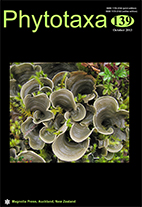Abstract
The pollen morphology of 15 species representing four sections of Youngia and 11 species from six other genera of the tribe Cichorieae was investigated. Measurements and observations were conducted through scanning electron microscopy. This study aims to provide new and useful information regarding the extent of pollen morphological diversity within the genus Youngia and related genera in the tribe Cichorieae and thus to contribute to a better understanding of the taxonomy and evolution of these groups. Six pollen types, distinguished primarily by the number of apertures and spines in the polar region, are described. Palynological characters are not useful for the delimitation of Youngia and its closely related genera Crepidiastrum, Ixeridium, and Crepis at the generic level, and did not fully resolve the relationships between the groups. The distinction of Faberia from the other members of the subtribe Crepidinae is supported by the pollen characters. Pollen morphology also did not support that Youngia sect. Desiphylum sensu Babcock and Stebbins may be separated at the generic level either as Tibetoseris or Pseudoyoungia. Four pollen types were found in Youngia s.l., i.e. Y. racemifera type, Y. japonica type, Y. prattii type and Y. sericea type, which partly reflect the sectional classification of Youngia sensu Babcock and Stebbins. The systematic position of Y. racemifera should be reconsidered according to pollen characters. The pollen data suggest that Y. sect. Mesomeris is not monophyletic, and the relationships of its species require further examination.

